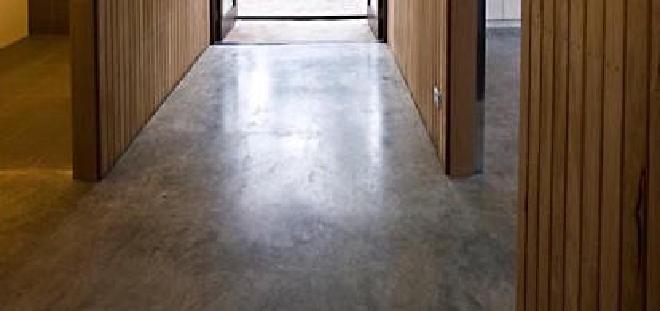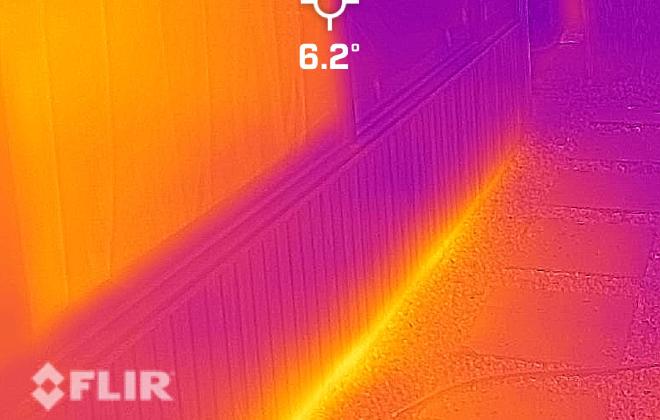NatHERS is biased towards concrete

Table of Contents
- that soils conduct heat away from concrete slabs only slowly.
- that insulation of concrete floors has complete coverage.
Are we pushing people into bad choices?
Thermal mass #
Thermal mass is not always a good thing. Its benefit, if used correctly, is to slow down temperature changes and smooth out the day/night cycle. But this can also be achieved in lightweight construction with good insulation and airtightness. With the added flexibility for rapid heating or cooling if needed.
The New Zealand government’s Building Performance website says:
Thermal mass can be a liability if used incorrectly, so it should be kept away from:
- cold, draughty areas such as entryways or unheated hallways
- rooms that face south or don't get much winter sun
- areas with poor insulation.

Concrete slab on ground #
Ground coupling is sometimes recommended to access the deep store of thermal mass in the ground. This may make sense in warm climates. But in a cold climate such as Canberra or Melbourne ground coupling is a liability for most of the year. A concrete slab on ground is therefore a problem unless it has excellent insulation.
The question is, how much of a problem is it?
Heat loss to ground #
NatHERS uses a simple equation for the heat transfer between slab and ground, described in Alterman, Luo, Moghtaderi & Chen (2012). The two key parameters for the rate of heat loss to the ground are thermal conductivity and diffusivity (which is conductivity divided by volumetric heat capacity).
The most important thing to know about soil conductivity and diffusivity is that they vary strongly with soil type and saturation. One study by Xie, Lu, Ren & Horton (2018) showed that diffusivity increases rapidly as dry soils are wetted.
The NatHERS values are:
- conductivity 1.5 W/mK
- diffusivity 4.6 × 10-7m2/s
I do not know the source or basis of these values.
The tool used for Passivhaus construction, PHPP, has different default values:
- conductivity 2.0 W/mK
- diffusivity 10.0 × 10-7m2/s
An experiment #
Here is a small 3-bedroom house in Canberra. It is the same model I used in this article on house size.

I made one version with a concrete slab on ground (exposed throughout), and another with a suspended timber floor. Here are the results:
| Timber | Concrete slab on ground | |
|---|---|---|
| Underfloor insulation | R4.0 | none |
| NatHERS star rating | 6.8★ | 7.1★ |
| Heating (MJ / m2 . year) | 104 | 108 |
| Cooling (MJ / m2 . year) | 27 | 9 |
This is with an enclosed (disconnected) subfloor, the best case.
So, according to NatHERS, the concrete slab on ground is clearly preferred.
but wait #
We know that ground thermal diffusivity varies over a wide range. What happens if we adopt the default values from the Passivhaus PHPP tool instead, for example?
| Timber | Concrete slab on ground, different parameters | |
|---|---|---|
| Underfloor insulation | R4.0 | none |
| NatHERS star rating | 6.8★ | 6.7★ |
| Heating (MJ / m2 . year) | 104 | 126 |
| Cooling (MJ / m2 . year) | 27 | 9 |
Now the situation is reversed, and we should prefer the suspended timber floor.
Slab insulation #
The results for the concrete slab house can easily be improved by adding under-slab or slab-edge insulation. But is this realistic?
My understanding of NatHERS is that under-slab insulation is assumed to be complete over the whole area of the slab. It does not account for missing insulation under footings (which is near-universal).
And, I think, slab-edge insulation is assumed to cover the whole of the slab edge; whereas the NCC specifies it only up to ground level.

I can not be sure about this because the precise implementation of NatHERS is kept hidden. Which is another story.
Conclusion #
The preference that NatHERS gives to concrete floors in cool climates has, I believe, led to peverse outcomes in terms of comfort, energy use, and embodied carbon. I have shown that by changing soil parameters within their typical range, the supposed advantage of concrete over timber floors can be reversed.
There is more to say about how NatHERS treats concrete floors and thermal mass. For instance, in the model above its benefit is mostly for cooling; but is it really meaningful to lump heating and cooling together? I explore this in The confusion at the heart of the building code.
Notes #
Here are the model files for these houses. Normal people can not change the ground model parameters, but I used my geek superpowers to do it.
